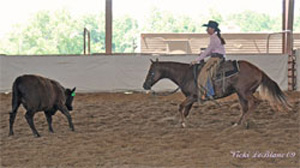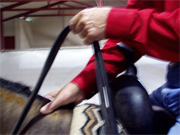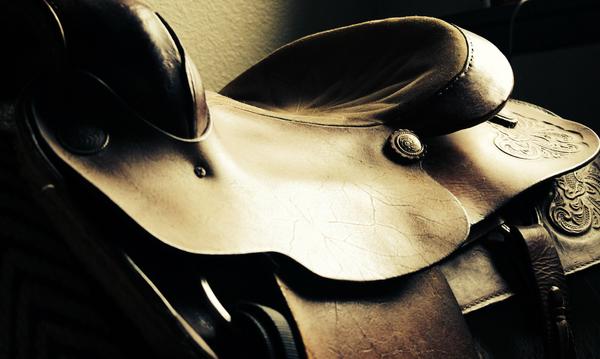1. Some folks have a passion to compete and some do not. This seems to be more of a natural personality trait. It’s not a better than or lesser than comparison with other people. It’s a natural joy to compete, or not.
If you’re not a competitor, don’t compare yourself to others who do.
If you love to compete, enjoy it for its own sake. You are meant to be there. Wherever you are in your skills and accomplishments (or not) doesn’t matter. You are enough right where you are. You are on a journey of ups and downs and arounds …. and always learning about yourself.
2. The difference between not riding in competitions and riding in scheduled shows is that shows require that you put yourself and your horse on the line at a specific scheduled time where you’re judged by a person or a clock.
These two elements by nature “push” you to be your best. Know you are helping yourself expand your experiences and skills. Celebrate that you have the discipline to keep reaching for more.
3. While competition appears to be “against” other people (meaning your results are measured externally) I submit that the only real competition is within yourself.
When you enter the show arena, your job is to do your very best in that ride, at that time. Judge your results by your own past performances.
As you continue to grow your mental and technical skills for your discipline, the external results will automatically take care of themselves. Your job is to keep upping YOUR game.
The secret is to be in the heart of your job each moment each time.
The great wrecking ball to any ride is thinking about the outcome.
This perhaps is the greatest discipline of all about showing … staying focused on all you can control. Get focused. Get into the highest level of relationship with your horse at that moment. Go for it. That is truly all that exists, no matter what significance any particular ride might hold.
Ride each ride like it’s the most important ride of your life. When you take this approach, you practice high level performance skills every time. This results in consistency. A “big” show won’t make a difference because that’s what you always do.
This is up to you, and only you to see it all this way.
4. Competition constantly challenges your belief in yourself. It beckons you to believe you can “do it” no matter what happens on the outside.
It’s natural and easy to feel vulnerable, frustrated, embarrassed and doubt your abilities when you fall short.
The challenge is to treat yourself as you would support your dearest friend.
Tell yourself over and over (in good times and bad) that you believe in yourself no matter the outcome. Know it. Claim it.
Your journey is a worthy and awesome one each step of the way.
Know in your heart that your belief in yourself can never be shattered by inevitable disappointments.
5. Showing is an adventure. Oh my! You never know what’s going to happen.
There’s that soulful relationship with your horse you absolutely cherish. How are the two of you going to mesh today?
There are all the people you get to meet. That’s always a trip!
There’s the show management. There’s the weather. There’s the ground. For those of us who work cattle, we wonder what the beasts will be like today … fire eating dragons or puppy dogs?
Who knows what the day will bring?
Enjoy being amazed. Life is meant to be an adventure! If you compete you signed up for a big adventure.
6. For a particular show season, set an “outcome” goal you can measure and that thrills you. This will fuel your motivation to get going and pick yourself up when you fall. An example would be to win a year end award of some kind.
But once that goal is set, just keep it quietly in your heart. Turn it over to God … or to the stars. You can’t control it.
But you can control many things. Show by show, class by class, focus on the tiny baby steps you can do, like how you use your seat or feet, or how you prepare yourself and your horse.
When you set these “performance” goals and you focus on them, you will automatically be taken to your best possibility to achieve your outcome goal.
That’s all you can do! And you can bet you will grow your skills … and hopefully attain your outcome goal.
7. Don’t just set your performance goals, get passionate about them. Focus like a laser beam on them each and every ride, moment by moment. There’s nothing else for you to do. You’ve prepared. You’re at the show. Go for it.
8. Video each ride. Study it closely. Evaluate your ride in tiny pieces.
Give yourself a celebratory fist pump for what you did well. Own these pieces. Don’t skip this step.
Wherever you fell short, search the video for exactly where the error just barely began. That’s the place to improve upon next time. With this approach, you have a totally customized achievement plan.
9. Be forever grateful … for the incredible opportunity to do what you do … for your horse … for your friends … for your trainer … for the awesomeness of just being able to physically get up in the morning and go show a magnificent horse.
Really, when you think about it, what a magical opportunity you have. There is no failure … only experiences. You are so lucky!
This is your journey. Drink it up.
10. You are always enough. Where you are at this moment is perfect. You are growing. You’re extraordinary. There is no failure. There is only an adventure.
That is the soul of competition … drinking up all of the magnificence of your own incredible journey. It is a gift.











